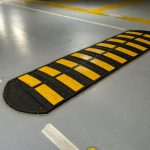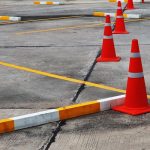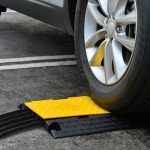Introduction
Why speed bumps are important
Speed bumps are important because they can help reduce the number of accidents and fatalities on the roads. They force drivers to slow down and pay more attention to their surroundings, making the roads safer for pedestrians, cyclists, and other drivers. Additionally, speed bumps can help reduce noise pollution and improve the quality of life for those living near busy roads. By advocating for speed bumps near your property, you can help create a safer and more peaceful community for everyone.
Benefits of having speed bumps near your property
Having speed bumps installed near your property can provide numerous benefits. Firstly, it can help to reduce the speed of vehicles passing by, making the area safer for pedestrians and other road users. This can be particularly important in residential areas where children may be playing or walking to school. Additionally, speed bumps can help to reduce noise pollution from vehicles, creating a more peaceful environment for residents. Finally, having speed bumps installed can also help to deter drivers from using the road as a shortcut, reducing traffic congestion and improving the overall flow of traffic in the area.
Step 1: Identify the problem
Observe traffic patterns
Observing traffic patterns is an essential step in getting local authorities to install speed bumps near your property. Take note of the speed and volume of traffic passing by your property, especially during peak hours. You can also observe the behavior of drivers, such as whether they are speeding, running stop signs, or engaging in other dangerous driving practices. This information will be useful when you approach your local authorities to request speed bumps. It will also help you make a strong case for why speed bumps are necessary to improve safety in your neighborhood.
Note down incidents of speeding
Once you have identified the need for speed bumps in your area, it’s important to gather evidence to support your case. Start by noting down any incidents of speeding that you witness or hear about from your neighbors. Keep a record of the date, time, and location of each incident, as well as any details about the vehicle or driver involved. This information will be useful when you approach your local authorities and can help to demonstrate the urgency of the situation. Additionally, you may want to consider setting up a neighborhood watch program or installing speed cameras to further monitor and document speeding in your area.
Collect data on traffic volume
To convince local authorities to install speed bumps near your property, it’s important to have concrete data on the traffic volume in your area. You can start by observing the traffic flow during different times of the day and noting down the number of vehicles passing by. You can also use traffic counting tools such as cameras or sensors to get accurate data. Additionally, you can gather information from your neighbors or local businesses to get a better understanding of the traffic patterns in your area. Having this data will help you make a stronger case to the local authorities and show them the need for speed bumps to improve safety in your neighborhood.
Step 2: Contact your local authorities
Find out who to contact
Once you have identified the local authority responsible for installing speed bumps in your area, it’s time to find out who to contact. This information can usually be found on the authority’s website or by calling their customer service line. It’s important to make sure you have the correct contact information to ensure your request is directed to the appropriate department. You may also want to consider reaching out to your local council member or representative for additional support in getting speed bumps installed near your property.
Write a letter or email
When writing a letter or email to your local authorities, it is important to be clear and concise about your concerns regarding speeding in your area. Begin by introducing yourself and your location, and then explain why you believe speed bumps would be beneficial. Provide specific examples of dangerous driving behavior you have witnessed, and how it has affected you and your community. Be sure to also mention any support you have from your neighbors or local organizations. Finally, politely request that the local authorities consider installing speed bumps near your property and offer to provide any additional information or assistance they may need.
Explain the problem and provide evidence
When explaining the problem to local authorities, it’s important to provide evidence that supports your claim. This evidence can include data on the number of accidents or near misses that have occurred in the area, as well as the speed at which drivers are traveling. You can also provide testimonials from other residents in the area who have expressed concern about the speed of traffic. By presenting this evidence, you can help local authorities understand the severity of the problem and the need for speed bumps to be installed near your property.
Request a meeting with the relevant authorities
When requesting a meeting with the relevant authorities, it is important to be prepared and professional. Make sure to have a clear and concise argument for why speed bumps are necessary in your area. Bring any data or evidence that supports your case, such as accident reports or traffic studies. It is also helpful to have a list of potential solutions and their estimated costs. Be open to compromise and willing to work with the authorities to find a solution that works for everyone. Remember to be respectful and courteous throughout the meeting, as building a positive relationship with the authorities can go a long way in achieving your goal.
Step 3: Attend the meeting
Prepare your case
Once you have identified the problem and gathered evidence, it’s time to prepare your case. Start by writing a letter to your local authority outlining the issue and the evidence you have collected. Be sure to include any relevant statistics, such as the number of accidents or near-misses that have occurred in the area. You may also want to include any personal anecdotes or experiences that demonstrate the need for speed bumps. It’s important to be clear and concise in your letter, and to make a strong case for why speed bumps are necessary. You may also want to consider gathering support from your neighbors or other community members who share your concerns.
Present your evidence
Once you have identified the need for speed bumps near your property, it’s important to gather evidence to support your request. This can include data on the number of accidents or near misses that have occurred in the area, as well as any complaints from residents or pedestrians. You can also take photos or videos of speeding vehicles or conduct a traffic survey to demonstrate the extent of the problem. By presenting this evidence to your local authorities, you can make a strong case for the installation of speed bumps and increase the likelihood of your request being granted.
Listen to the authorities’ response
Once you have made your request for speed bumps, it is important to listen to the response from the local authorities. They may have concerns or suggestions that could help improve the chances of your request being approved. If they deny your request, ask for specific reasons why and if there are any alternative solutions that could be considered. It is important to maintain a respectful and cooperative attitude throughout the process to increase the likelihood of a positive outcome. Remember, the ultimate goal is to improve safety for everyone in the community.
Negotiate a solution
Once you have presented your case to the local authorities and they have agreed to consider installing speed bumps near your property, it is important to negotiate a solution that works for both parties. This may involve discussing the location and design of the speed bumps, as well as any potential impact on traffic flow and emergency services. It is important to remain open to compromise and to work collaboratively with the authorities to find a solution that addresses your concerns while also meeting their requirements and regulations. By approaching the negotiation process in a constructive and respectful manner, you can increase the likelihood of a successful outcome and a safer community for all.
Step 4: Follow up
Send a thank-you note
After the speed bumps have been installed, it’s important to show your appreciation to the local authorities who made it happen. Sending a thank-you note is a simple yet effective way to express your gratitude. In the note, you can thank them for taking action to improve the safety of your neighborhood and for listening to your concerns. This gesture can also help to build a positive relationship with the local authorities, which may be beneficial in the future if you have any other concerns or requests.
Ask for updates on the progress
Once you have made your request for speed bumps to be installed near your property, it is important to follow up with the local authorities to ask for updates on the progress. This will show that you are invested in the project and that you are eager to see it come to fruition. You can contact the relevant department or individual responsible for the installation and ask for updates on the timeline, budget, and any potential roadblocks that may arise. By staying informed, you can also provide any additional information or support that may be needed to move the project forward.
Offer to help with implementation
Once you have convinced the local authorities to install speed bumps near your property, it’s time to offer your assistance with the implementation process. This can include helping with the design and placement of the speed bumps, as well as providing input on the materials used. You can also offer to help with the installation process itself, whether it’s by providing labor or equipment. By showing your willingness to help, you can demonstrate your commitment to making your neighborhood safer and more livable for everyone.
Monitor the situation
Once you have made a request for speed bumps to be installed near your property, it is important to monitor the situation. Keep track of any changes in traffic patterns or accidents that occur in the area. If you notice that the speed bumps have not been installed or are not effective, follow up with the local authorities to inquire about the status of your request. It may also be helpful to gather support from other residents in the area who share your concerns about speeding. By staying vigilant and proactive, you can increase the chances of getting the speed bumps you need to keep your neighborhood safe.
Conclusion
Summary of the steps
In summary, getting local authorities to install speed bumps near your property requires a combination of research, communication, and persistence. It’s important to gather data on the traffic patterns and speed in your area, as well as any accidents or near-misses that have occurred. From there, you can reach out to your local government officials and express your concerns, providing evidence to support your request for speed bumps. It may take some time and effort, but by staying engaged and advocating for your community’s safety, you can make a difference in reducing speeding and improving road safety.
Tips for success
Tips for success: 1. Gather support from your neighbors: Before approaching your local authorities, it’s important to gather support from your neighbors. Talk to them about the benefits of having speed bumps installed near your property and ask them to sign a petition in support of your request. 2. Provide evidence of the need for speed bumps: In order to convince your local authorities to install speed bumps, you need to provide evidence of the need for them. This could include data on the number of accidents or near misses that have occurred in the area, as well as any complaints you’ve received from residents about speeding drivers. 3. Be persistent: Getting speed bumps installed near your property can be a lengthy process, so it’s important to be persistent. Follow up with your local authorities regularly and keep pushing for a decision to be made. 4. Consider alternative solutions: If your local authorities are hesitant to install speed bumps, consider alternative solutions such as traffic calming measures or increased police presence in the area. Be open to compromise and willing to work with your local authorities to find a solution that works for everyone.
Importance of community involvement
Community involvement is crucial when it comes to getting local authorities to install speed bumps near your property. By working together, residents can show a united front and demonstrate the need for traffic calming measures. This can be achieved through organizing meetings, creating petitions, and reaching out to local officials. When the community is actively involved, it sends a message to the authorities that the issue is important and needs to be addressed. Additionally, community involvement can help to ensure that the speed bumps are installed in the most effective locations and that they meet the needs of all residents.








